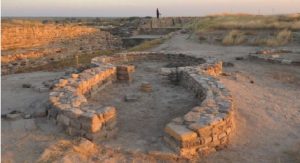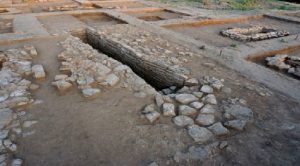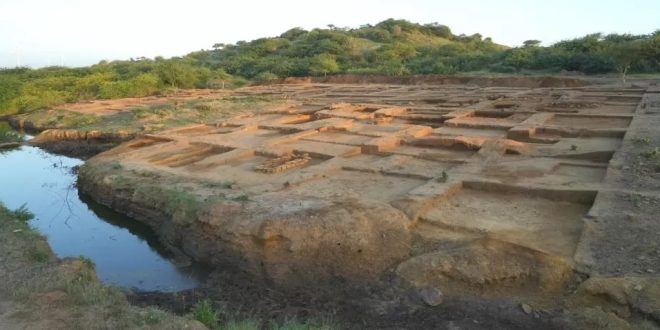16-10-2023
Bureau Report + Agencies
NEW DELHI: Scientists have unveiled a sprawling burial site in India belonging to one of the world’s earliest urban civilizations. Soutik Biswas delves into the clues the graves might give us about how the early Indians lived and died.
In 2019, as scientists embarked on excavating a mound of sandy soil near a remote village in the sparsely populated  Kutch region, situated not far from Pakistan in India’s western state of Gujarat, they had no inkling of the surprise that lay in store for them.
Kutch region, situated not far from Pakistan in India’s western state of Gujarat, they had no inkling of the surprise that lay in store for them.
“When we began digging, we thought it was an ancient settlement. Within a week, we realized it was a cemetery,” says Rajesh SV, an archaeologist with the University of Kerala, who led the search.
How ancient DNA may rewrite prehistory in India
Three excavation seasons involving more than 150 Indian and international scientists – have been conducted so far at the 40-acre site. Researchers now estimate the presence of at least 500 graves of the Indus society, one of the world’s earliest urban civilizations. (Some 200 of these graves have been excavated.)
Also known as the Harappa civilization, named after its first city, this society austere farmers and traders who lived in walled, baked-brick cities, rose to prominence some 5,300 years ago in what is now north-west India and Pakistan. In a century since the civilization’s initial discovery, researchers have unearthed up to 2,000 sites in India and Pakistan.
 Scientists reckon the sprawling burial ground near Khatiya village in Gujarat may potentially be the largest “pre-urban” cemetery of the society discovered so far. They believe it was in use for about 500 years, spanning from 3200BC to 2600BC, making the oldest graves here around 5,200 years old.
Scientists reckon the sprawling burial ground near Khatiya village in Gujarat may potentially be the largest “pre-urban” cemetery of the society discovered so far. They believe it was in use for about 500 years, spanning from 3200BC to 2600BC, making the oldest graves here around 5,200 years old.
Excavations so far have yielded a single intact male human skeleton, as well as partly preserved skeletal remains including skull fragments, bones and teeth.
They have also found an array of burial artefacts – more than 100 bangles and 27 beads made of shell. Ceramic vessels, bowls, dishes, pots, small pitchers, beakers, clay pots, water cups, bottles and jars have also been discovered. Minor treasures include beads made of the semi-precious stone, lapis lazuli.
The graves have unique features, including sandstone-lined burial shafts that point in different directions. Some are oval shaped; others rectangular. There are smaller graves where children were buried. The bodies appear to be laid supine, but most bones have dissolved because of the acidic soil.
 Pressmediaofindia
Pressmediaofindia




